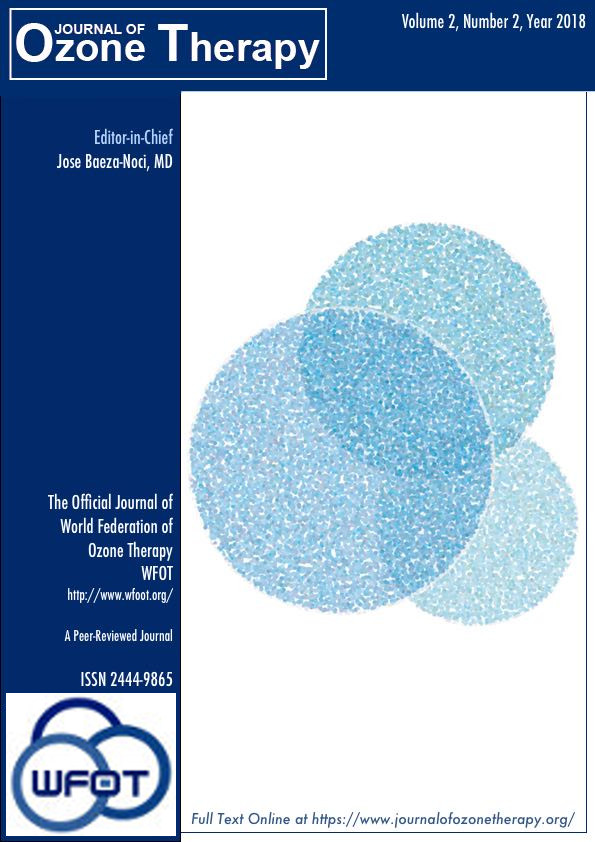Chelation and Ozone Combination – the knock-out blow in treating ischemic heart disease [abstract]
DOI:
https://doi.org/10.7203/jo3t.2.2.2018.11161关键词:
ozone therapy, ischemic heart disease 摘要
摘要
The recent TACT study published in the Journal of the American Medical Association showed that up to 50% of selected patients with heart disease will die from their disease unless they are treated with EDTA chelation therapy. Special benefits are seen in the diabetic population. TACT 2 is now underway to better understand the mechanisms at play to bring about this outcome. (Lamas, G. A., Goertz, C., Boineau, R., Mark, D. B., Rozema, T., Nahin, R. L., et al. (2013). Effect of disodium EDTA chelation regimen on cardiovascular events in patients with previous myocardial infarction: the TACT randomized trial. JAMA, 309(12), 1241–1250).
Now a new study is offering proof that not only can EDTA chelation therapy treat heart disease, it can also treat the atherosclerosis that leads to heart disease.
The researchers looked at the effect of EDTA chelation therapy on 118 men and women with atherosclerosis. Their ages ranged from 48 to 89 years old. Before the study began, they measured the pulse wave velocity of their arteries. After only 10 chelation treatments, the pulse wave velocity readings decreased substantially. The arteries were becoming more flexible and less stiff. After 20 chelation treatments, the readings decreased even more. And after 30 treatments, the decrease in the readings seems to have reached their maximum in most of the patients. This is exactly what I have been seeing in my patients for the past 35 years. Maximum effect of chelation therapy tends to occur between 20-30 treatments (Tadashi Mitsuo, MD, Sigenori Nakano, MD, Masao Yoshida,MD, Hideki Ohno,MD, Kazuo Tsubota,MD. Na2EDTA Chelation Therapy Can Decrease baPWV in Elderly Patients. www.acam.org/news. Friday, June 13, 2014).
When it comes to heart disease, the combination of Chelation and Ozone works even better than the chelation treatments by themselves. The chelation therapy treats the atherosclerosis and the ozone improves the way the heart cells use oxygen – a perfect marriage.
Ozone therapy improves oxygen delivery and circulation by:
1 Decreasing the viscosity and thickness of the blood, so that it can navigate the small capillaries better, and is easier to pump
2 Improves the ability of red blood cells to unload oxygen to the tissues. This persists long after the course of treatments is completed
3 Decreases inappropriate inflammation in the blood, allowing for the formation of nitric oxide to help the arteries dilate, further improving blood flow.
Chelation therapy improves circulation by:
1 Removing heavy metals such as lead, which impair the formation of nitric oxide. Nitric oxide is produced by the lining of the blood vessels as a signal to help arteries relax and dilate, improving circulation
2 Delivering high doses of nutrients such as magnesium, acting as a natural calcium channel blocker to keep arteries dilated and relaxed.
 Downloads
Downloads
Downloads
已出版
How to Cite
-
摘要2984
-
PDF 622
期
栏目
License
Journal of Ozone Therapy applies the Creative Commons Attribution-NonCommercial 4.0 International License (CC BY NC 4.0) license to works we publish.
Under this license, authors retain ownership of the copyright for their content, but allow anyone to download, reuse, reprint, modify, distribute and/or copy the content as long as the original authors and source are cited. No permission is required from the authors or the publishers.
You may not use the material for commercial purposes.
Appropriate attribution can be provided by simply citing the original article, provide a link to the license, and indicate if changes were made.
You may do so in any reasonable manner, but not in any way that suggests the licensor endorses you or your use.




